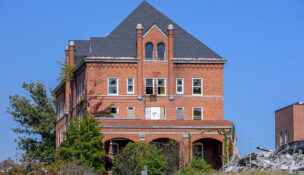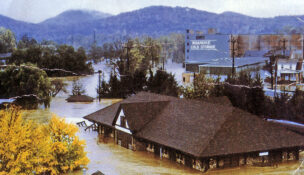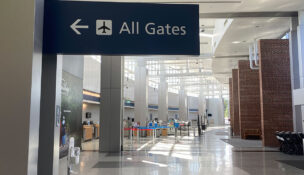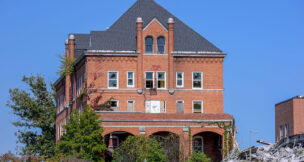
Attochron technology could overcome the commercial last-mile broadband connection gap, says CEO Tom Chaffee. Photo by Norm Shafer

Attochron technology could overcome the commercial last-mile broadband connection gap, says CEO Tom Chaffee. Photo by Norm Shafer
Lexington tech firm aims to bridge last-mile broadband gap
Arrman Kyaw //December 31, 2024//
Broadband access may become easier to attain for businesses as a Lexington-based company looks to wirelessly transmit data more reliably.
Over the past 22 years, Attochron has been working towards improving what’s referred to in the industry as free-space optical communications (FSOC) — using lasers to send data through air instead of via fiber optic cables.
Attochron is picking up ample momentum, going from finding their first angel investor in 2004 to completing $15 million in Series A funding with New York private equity firm Three Cities Research in July 2024.
“It was about 15 years of baby steps,” says Attochron founder and CEO Tom Chaffee.
FSOC technology has been decades in the making but often ran into issues with how light sent through the air gets broken up and ends up overlapping and interfering with itself, according to Attochron representatives. Attochron aims to remedy this by shortening the pulses their small devices send out, resulting in next to no overlap for limited distances.
“These pulses are extremely short,” says Wayne Knox, professor of optics at the University of Rochester and a paid consultant for Attochron. “They don’t interfere with themselves when we propagate them in the air.”
According to a release from networking market research consultancy Vertical Systems Group, more than 3.8 million U.S. commercial sites had no optical fiber access to network services in 2022.
Being able to send data wirelessly through the air in this way will allow businesses without access to physical fiber optic cables — due to construction costs or security concerns over shared infrastructure — to finally get connected. What exists as “the commercial last mile” direct connection gap between such users and the internet’s backbone can now be overcome, Chaffee says.
“Leave the fiber where it is,” Chaffee says. “But save the money when you’re trying to connect that fiber to that enterprise. Instead of trenching and digging under this and over that, beam the Attochron laser to the customer. We’re only connecting the mile.”
Attochron’s devices aim to beam and receive lasers from one another and require line-of-sight. The company currently has 11 full-time employees and about six consultants, according to Chaffee. Though its devices were not yet commercially available as of November 2024, Attochron has worked with Louisiana telecom company Lumen Technologies to test its products in the Blue Ridge Mountains and is seeking growth and investment, Chaffee says.
-
















